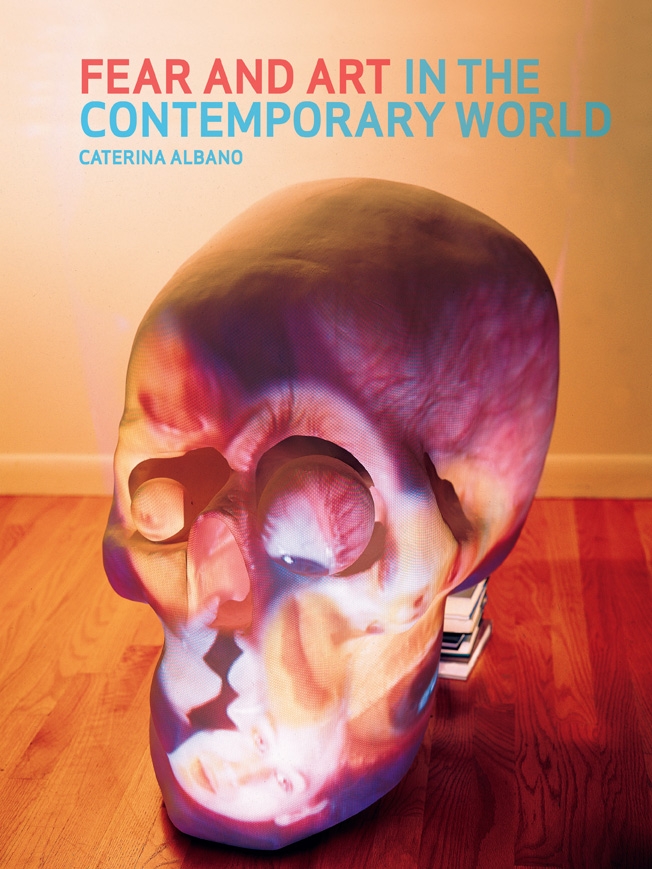How did fear become the zeitgeist? This is the question that drives Caterina Albano’s tour of the more anxious ends of the emotional spectrum. It actually brought to mind an earlier time – of SARS and WMDs, of ambiguous threats and shady statecraft – and consequently Albano’s talk of a ‘culture of fear’ seemed, at least to me, a little ‘2003’. But I was wrong: as current ‘voice of a generation’ Lena Dunham admits at the climax of her HBO series Girls (2012), “I’m scared all the time… I’m more scared than most people are when they say they’re scared. I’m, like, the most scared person who’s alive” – to which her boyfriend replies, “Join the fucking club!”
Even so, it’s been a very long zeit. In his Introductory Lectures on Psychoanalysis (1920) Freud describes how, from the mid-nineteenth century onwards, the number of reported phobias exploded, encompassing everything from caterpillars and mice to boats and bridges. The doctor distinguished several shades of fear, including the ‘real fear’ linked to palpable threats and self-preservation, as well as phobias and plain ‘ordinary nervousness’. But above all else, it was anxiety – what Freud called ‘free floating fear’ – that would become the quintessentially modern feeling. What distinguishes anxiety is that it lacks an object: the phobic person is, at least, scared of something, whereas the anxious person is just scared.
Albano is a researcher and curator for the UK-based Artakt, a group that produces crossover science/art exhibitions, most recently on psychoanalysis (at London’s Science Museum, 2010–11) and on art and biotechnologies (at London’s Royal Institution, 2009). Fear and Art… reflects this collision of disciplines, quoting from medical history, sociology, film theory and experimental psychology. This approach is very appealing, if not always helpful: the medical histories are particularly fascinating, the neuroscience less so (why does brain research only ever seem to confirm ‘common sense’?).
Albano’s other concern is the aesthetics of fear, and the book might be best understood as a series of case studies through which such an aesthetics might suggest itself. It is divided into four sections, ‘Bodies’, ‘Narratives’, ‘Objects’ and ‘Spaces’, and each theme is drawn out via a series of artworks. The selection is wide-ranging, but UK artists such as Rachel Whiteread, Douglas Gordon, Cornelia Parker and Willie Doherty are some of the book’s recurring characters. The author’s enthusiasm for all things fearful sometimes feels limited by a need to talk about contemporary artists (I kept hoping ‘less art, more fear!’) At other times, the art is curiously absent. In chapter two a quote from Mike Kelley suddenly appears, tells us something about the uncanny and vanishes. The chapter drifts elsewhere, and Kelley and his work remain undiscussed.
Albano states at the outset that she is more interested in capturing ‘points of contact’ than drawing a comprehensive picture. The breadth of reference establishes plenty of these, but this expansiveness also means the book suffers from a certain fogginess. This is not helped by a style that sometimes slips into the weird antiwriting of academia, overprecise to the point of vagueness (a sentence at random: ‘Beyond the critical and historical debates over the formalisation of the concept of the Holocaust and its memorialisation, the cultural processes in which it is embedded are framed within the constitution of affective narratives that visually or otherwise are confronted with the emotional charge of the events.’) If today’s fear is free-floating, Fear and Art… matches its subject pretty well. Albano offers an intriguing compilation of research, but like big claims about epochs and zeitgeists, the precise contours of our anxious age are yet to be pinned down.
This article was first published in the January & February 2013 issue.
